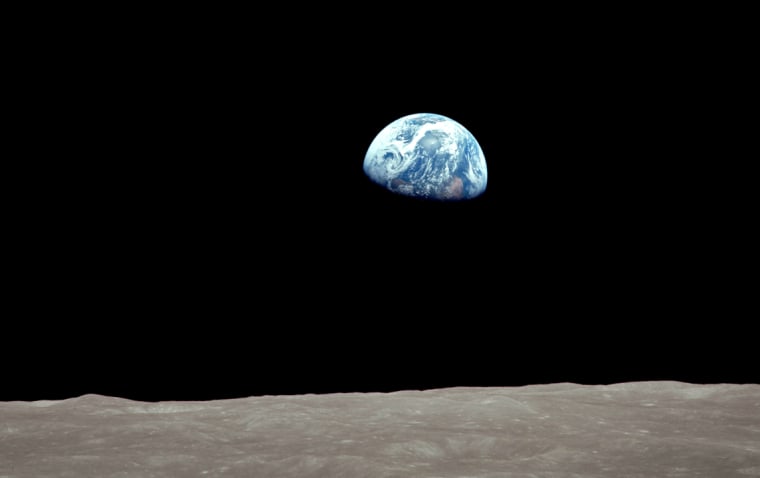Water covers more than 70 percent of Earth’s surface, but where all that life-giving liquid came from and when it arrived have long been a mystery. Now there's new research suggesting that our planet got its water more than 4 billion years ago, when a celestial object about the size of Mars collided with Earth to form the moon.
For the first few million years of its existence, the solar system was split between a “dry” inner region and a “wet” outer region beyond the asteroid belt that lies between Mars and Jupiter. The outer region contained water-bearing asteroids of various sizes, but the strong gravitational pull of Jupiter kept those watery space rocks away from near Earth and other planets in the inner solar system.
Scientists knew that one or more of those water-bearing asteroids must have come our way at some point, but they couldn’t explain how or when.
To solve the mystery, researchers in Germany looked for traces of the metallic element molybdenum in seven terrestrial rocks and 39 meteorite samples. By checking the minerals for different chemical variants, or isotopes, of molybdenum, the scientists had a “fingerprint for differentiating material from the inner and outer solar system,” said Christoph Burkhardt, a geochemist at the University of Münster and one of the authors of the new study, published May 20 in the journal Nature Astronomy.
Examining these fingerprints showed that some of Earth’s molybdenum came from the outer solar system. Using computer models to simulate various scenarios, Burkhardt and his colleagues were able to narrow down the timing of when this material from the outer solar system was delivered to Earth.
They found that the timing likely coincided with a cosmic smash-up that created the moon. Scientists generally agree that the moon formed from debris left over when the Mars-sized object, known as Theia, slammed into Earth about 4.4 billion years ago.
“When we looked at all the different possibilities, Earth must have acquired this outer solar system material relatively late in its formation, and the giant impactor that produced the moon had the signature of this [water-rich material] from the outer solar system,” Burkhardt said.
But not everyone is convinced that Theia came from the outer solar system — or that its collision with Earth explains the origin of water on the planet.
Stephen Mojzsis, a University of Colorado geologist who was not involved with the new research, praised Burkhardt and his colleagues for their “beautiful analytical work” but said he was skeptical about the conclusions.
“It’s extremely difficult to move an object that large from the outer solar system to the inner solar system,” he said. “For an object the size of Theia, you would have to greatly perturb the orbit — some kind of push so that gravity takes over and you accelerate toward the sun. And it’s unclear how that would happen.”
Mojzsis's own research suggests that Theia originated much closer to home — in the inner solar system. “It had a composition not dissimilar to Earth’s composition,” he said. “Most of us working on this problem consider Theia to be leftovers of planet formation that was in the neighborhood of Earth.”
One previously prominent theory held that Earth's water came from comets, but Mojzsis said that had been ruled out because the chemical fingerprint of most known comets — notably the form of hydrogen they contain — doesn't match what is found in Earth's oceans.
Steven Desch, a professor of astrophysics at Arizona State University in Tempe who wasn't involved with the new study, said it’s possible that Earth had water long before the moon-forming impact — likely in the form of clays that released water when heated by the collision. “By the time of the impact with Theia,” Desch said, “Earth probably had almost all the water it was going to have.”
Want more stories about space?
- New Hubble Space Telescope photo is a 'living history book' of our universe
- Scientists finally solve the mystery of weird aurora-like lights in the sky
- The moon is shrinking, and a new study shows it's racked by moonquakes
SIGN UP FOR THE MACH NEWSLETTER AND FOLLOW NBC NEWS MACH ON TWITTER, FACEBOOK, AND INSTAGRAM.


